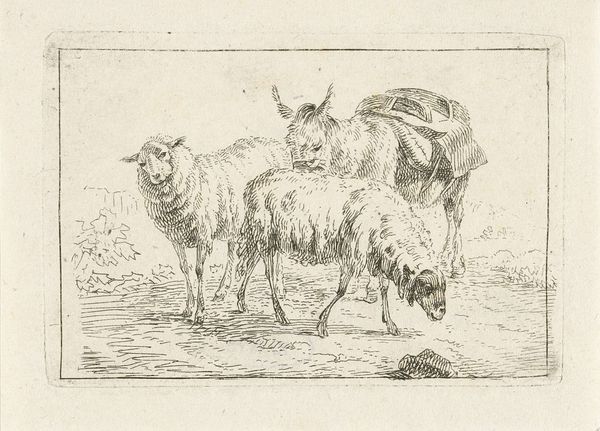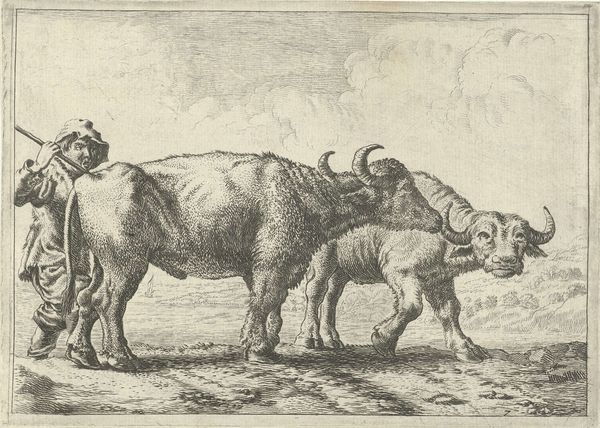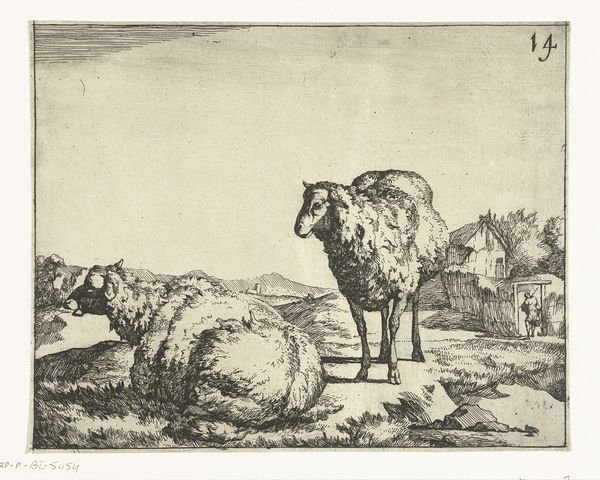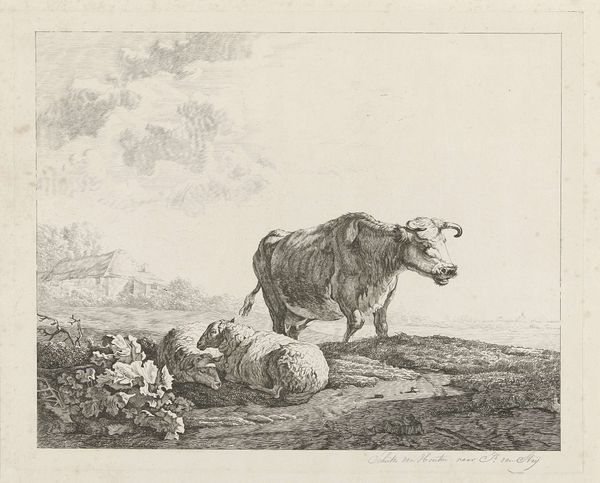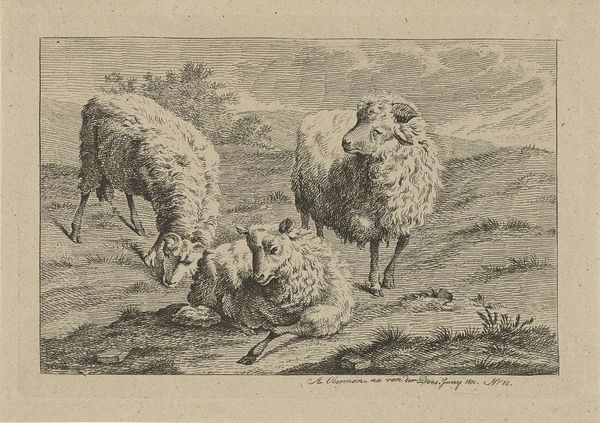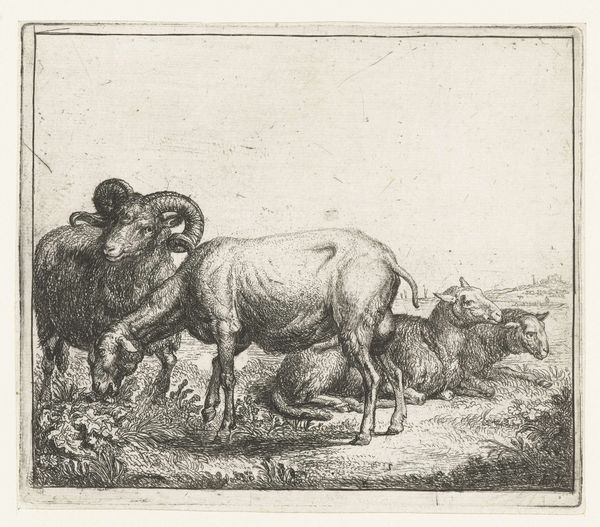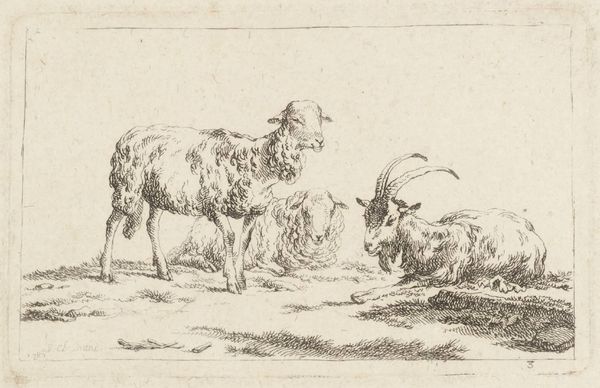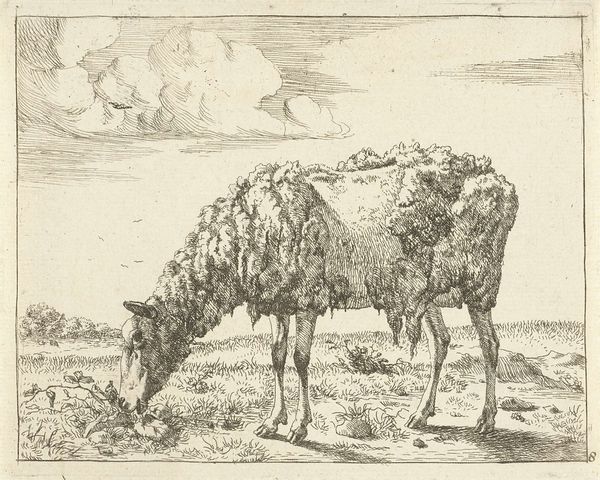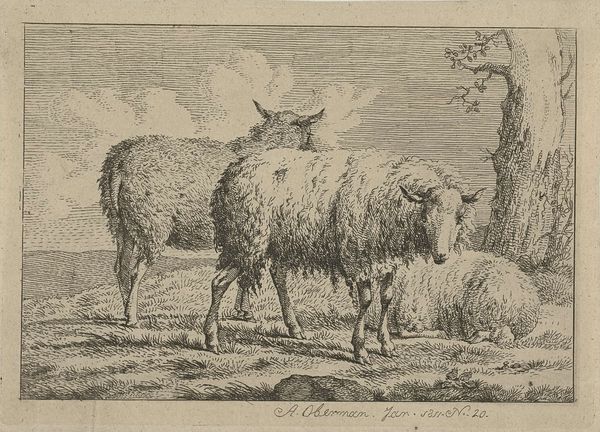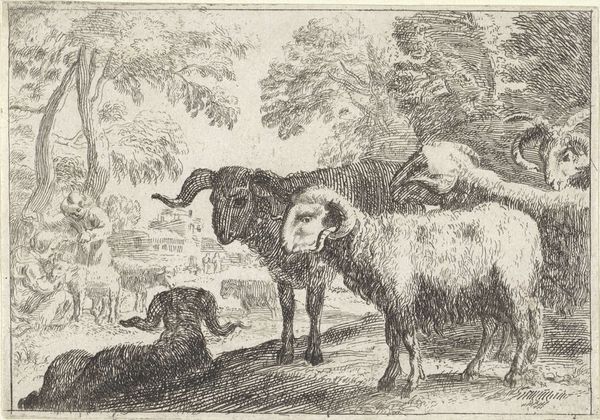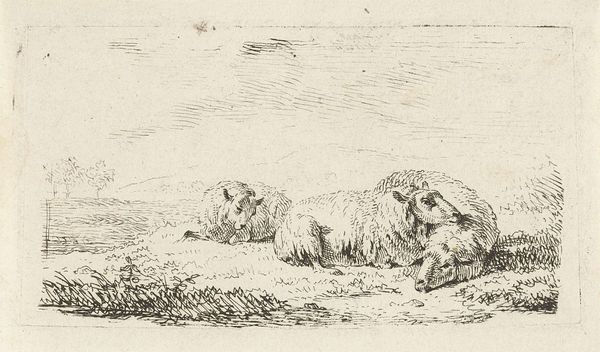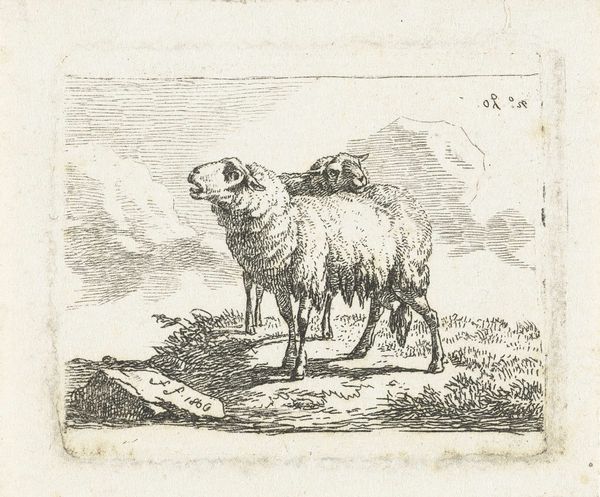
drawing, print, etching
#
drawing
#
animal
# print
#
pen sketch
#
etching
#
landscape
Dimensions: height 63 mm, width 75 mm
Copyright: Rijks Museum: Open Domain
Editor: So, this is "Drie schapen" by Jan Matthias Cok, made sometime between 1735 and 1771. It’s a print – an etching, I think – depicting three sheep in a field. I'm struck by the artist’s use of line; it creates such a tactile sense of wooliness. What stands out to you from a formal perspective? Curator: The strategic employment of line certainly merits attention. Observe the hatching and cross-hatching. It's not merely descriptive, but fundamentally structural. Note how variations in density and direction articulate volume, delineate spatial relationships, and modulate light, guiding the viewer's gaze through a landscape primarily constructed through line and tone rather than color and mass. The relationship between positive and negative space is crucial. Does the simplicity of the composition distract from the intensity of its mark-making? Editor: I wouldn't say "distract," exactly. I think the sparseness of the background actually makes the detail in the sheep stand out even more. You're focusing on these hatching and cross-hatching, is there any kind of traditional pattern that emerges in works like these, like a conventional way to render the coat of a sheep? Curator: Traditional or conventional rendering strategies might provide a foundation. What interests me most is how Cok manipulates this method to construct form. How does he suggest texture and volume within this self-imposed restriction? The degree of variation demonstrates Cok’s skillful formal analysis of light and shadow, transforming simple figures into compelling compositions. Editor: That makes me appreciate the detail so much more, looking at how this technique builds the form from basically just black lines, and considering its overall place in the artwork. Curator: Exactly. By attending closely to the artistic composition of its components, we obtain the richness this deceptively straightforward piece offers.
Comments
No comments
Be the first to comment and join the conversation on the ultimate creative platform.
